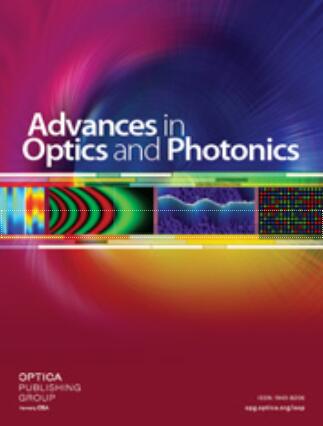Low-operating-energy directly modulated lasers for short-distance optical interconnects
IF 23.8
1区 物理与天体物理
Q1 OPTICS
引用次数: 41
Abstract
We review recent developments in directly modulated lasers (DMLs) with low operating energy for datacom and computercom applications. Key issues are their operating energy and the cost for employing them in these applications. To decrease the operating energy, it is important to reduce the active volume of the laser while maintaining the cavity Q-factor or photon lifetime in the cavity. Therefore, how to achieve high-reflectivity mirrors has been the main challenge in reducing the operating energy. In terms of the required output power from the lasers, the required input power into the photodetector and the transmission distance determine the lower limit of laser active volume. Therefore, the operating energy and output power are in a trade-off relationship. In designing the lasers, the cavity volume, quantum well number, and optical confinement factor are critical parameters. For reducing the cost, it is important to fabricate a large-scale photonic integrated circuit (PIC) comprising DMLs, an optical multiplexer, and monitor photodetectors because the lower assembly cost reduces the overall cost. In this context, silicon (Si) photonics technology plays a key role in fabricating large-scale PICs with low cost, and heterogeneous integration of DMLs and Si photonics devices has attracted much attention. We will describe fabrication technologies for heterogeneous integration and experimental results for DMLs on a Si substrate.用于短距离光互连的低工作能量直接调制激光器
我们综述了用于数据通信和计算机通信应用的低工作能量直接调制激光器(DML)的最新发展。关键问题是它们的操作能量和在这些应用中使用它们的成本。为了降低工作能量,重要的是在保持腔中的腔Q因子或光子寿命的同时减少激光器的有效体积。因此,如何实现高反射率反射镜一直是降低工作能量的主要挑战。就激光器所需的输出功率而言,进入光电探测器所需的输入功率和传输距离决定了激光器有效体积的下限。因此,工作能量和输出功率处于权衡关系中。在设计激光器时,腔体积、量子阱数和光学约束因子是关键参数。为了降低成本,制造包括DML、光学多路复用器和监控光电探测器的大规模光子集成电路(PIC)是重要的,因为较低的组装成本降低了总成本。在这种背景下,硅(Si)光子学技术在低成本制造大规模PICs方面发挥着关键作用,DML和Si光子学器件的异质集成备受关注。我们将描述异质集成的制造技术和硅衬底上DML的实验结果。
本文章由计算机程序翻译,如有差异,请以英文原文为准。
求助全文
约1分钟内获得全文
求助全文
来源期刊

Advances in Optics and Photonics
OPTICS-
CiteScore
56.60
自引率
0.00%
发文量
13
期刊介绍:
Advances in Optics and Photonics (AOP) is an all-electronic journal that publishes comprehensive review articles and multimedia tutorials. It is suitable for students, researchers, faculty, business professionals, and engineers interested in optics and photonics. The content of the journal covers advancements in these fields, ranging from fundamental science to engineering applications.
The journal aims to capture the most significant developments in optics and photonics. It achieves this through long review articles and comprehensive tutorials written by prominent and respected authors who are at the forefront of their fields.
The journal goes beyond traditional text-based articles by enhancing the content with multimedia elements, such as animation and video. This multimedia approach helps to enhance the understanding and visualization of complex concepts.
AOP offers dedicated article preparation and peer-review support to assist authors throughout the publication process. This support ensures that the articles meet the journal's standards and are well-received by readers.
Additionally, AOP welcomes comments on published review articles, encouraging further discussions and insights from the scientific community.
In summary, Advances in Optics and Photonics is a comprehensive journal that provides authoritative and accessible content on advancements in optics and photonics. With its diverse range of articles, multimedia enhancements, and dedicated support, AOP serves as a valuable resource for professionals and researchers in these fields.
 求助内容:
求助内容: 应助结果提醒方式:
应助结果提醒方式:


